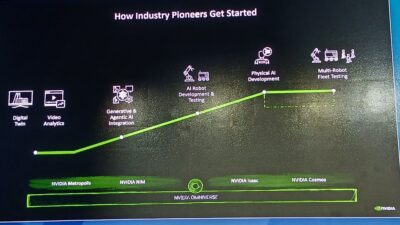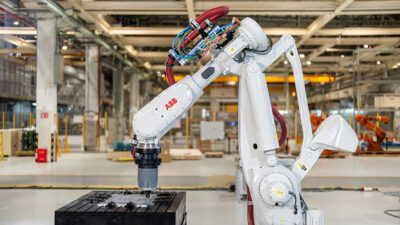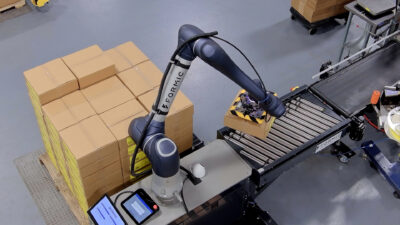Global growth for the robotics industry plus lower overall startup costs and technology upgrades is driving growth in non-automotive industries.

Robots are becoming a common sight in everyday life. They are no longer just working in production facilities, packing orders at distribution centers, or medical laboratories. Collaborative robots are now seen working alongside staff at local department stores and grocery stores. There they assist humans with complex tasks like taking inventory.
Automation is being pushed to get more competitive, and e-commerce is driving warehouse and logistics applications for robotics. Robot startups are securing hundreds of millions in venture capital. The warehouse and automation market is expected to double in the next five years. As a result, mobile and collaborative robots will be getting a boost.
North American robotics still in early stages
The International Federation of Robotics projected 14% annual growth in robot sales globally through 2021. In North America, non-automotive robot sales were up 17% last year over 2017, explained Jeff Burnstein, president of the Association for Advancing Automation (A3).
North America is still in the early stages of robot use and what robots can do in friendly and unfriendly industrial environments. Industry is just now starting to transition from fixed automation to robotics. Experts believe that we’re on the precipice of huge growth.
Global adoption contributing to expansion
Expect collaborative robots to expand their footprint outside of North America, as well. The U.S. is expecting double-digit growth, and there is much potential for global growth. Countries like Japan, Korea, Vietnam, and Germany have ramped up their robot orders.
More good news is that collaborative robots aren’t expected to take human jobs. Global economies are already feeling the effects of a labor shortage that seems will only get worse, and industries are turning to collaborative robots to fill their needs. The robotics industry is also adding new jobs in the form of engineers, technicians, and other support roles.
Future robot upgrades to add to growth
Some upgrades for robots are coming in terms of vision and dexterity. Machine vision advances will give robots the ability to see much more clearly. As for dexterity, robots will soon be grasping items they can’t or have trouble grasping today. Deep learning is helping robot arms improve their own programming and locate and move boxes more efficiently.
Artificial intelligence (AI) and machine learning (ML) will allow robots to learn without complex programming. Cloud communication will advance machine learning at an even faster rate. The capabilities of these connected robots will be upgraded in near real time. AI systems can now learn warehouse environments and improve processes on their own.
This article originally appeared on the Robotics Online Blog. Robotic Industries Association (RIA) is a part of the Association for Advancing Automation (A3), a CFE Media content partner.



